One Day, Two Ross’s
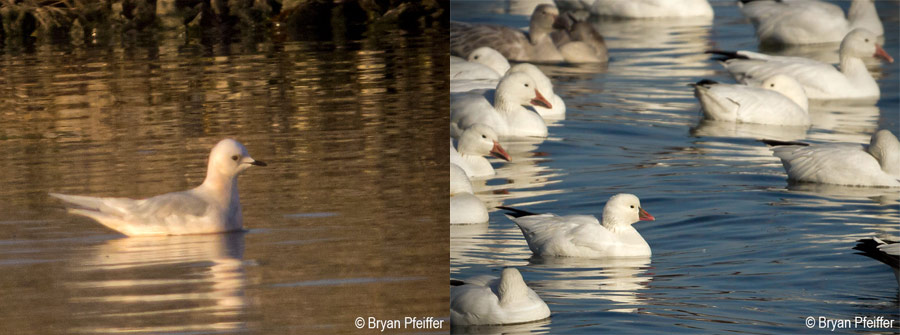
AT DAWN in in the ornate village of Chambly, Quebec, at a bulge in the Richelieu River, restless gulls began to take flight. And five restless birdwatchers (many more would come later) began their search, scanning the river for an arctic ghost, the rarest of the rare, a Ross’s Gull.
With a gentle head, tiny bill, beady eye and angular wings, Ross’s is a dovish gull. Rarely does it stray far from its arctic breeding grounds. You want the audacity of hope? Find it not in Ross’s Gull. Find better odds in no-hitters or love at first sight. Few other birds provoke more wistfulness among birders here in North America. Ross’s Gull is a dream.
I chase other dreams. At this point in my birding life, having seen plenty, I’m content with whatever flies across my path on daily walks here in Montpelier, Vermont. I don’t drive far to chase rare birds anymore. But my oft-stated exception has always been Ross’s Gull. Recognizing elegance in all gulls, I still seek the most elegant of our gulls. So Ted Murin, Josh Lincoln and I left Vermont ugly early on Saturday, cleared customs in the dark and were set up on the river in Chambly where the gull had been spotted days earlier. Five minutes into our search something flying on deep wingbeats emerged from the haze of a chilly river at dawn.
“I’ve got dark underwings moving left!” I shouted. Dark underwings. This silvery gull of ice and snow, often washed in pink, has dark undersides to its wings. But so does one of its relatives, Little Gull, itself a great find (except in the presence of Ross’s Gull). Ted and Josh quickly turned their optics toward the ghost. It banked and began to fly straight at us.
On the opening day of deer season here in Vermont, with a gull heading my way, I had the avian equivalent of buck fever.
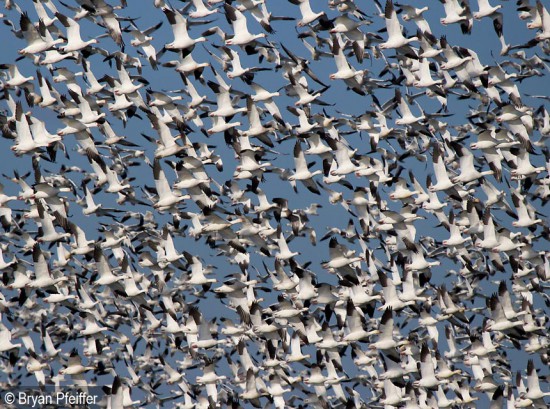 Ross’s Goose (not Gull) is another beast entirely – rare but possible, a diminutive cousin the abundant Snow Goose. Among the enormous flocks of white geese moving south toward the mid Atlantic states each fall, we might find one Ross’s Goose for every four our five thousand Snow Geese. That’s a wild guess, but probably not too far off. To find the Ross’s Goose you must search through the honking, kinetic mass of Snow Geese for an individual about three-quarters the size with a more rounded head and a stubby bill. I can think of few more enjoyable challenges in November.
Ross’s Goose (not Gull) is another beast entirely – rare but possible, a diminutive cousin the abundant Snow Goose. Among the enormous flocks of white geese moving south toward the mid Atlantic states each fall, we might find one Ross’s Goose for every four our five thousand Snow Geese. That’s a wild guess, but probably not too far off. To find the Ross’s Goose you must search through the honking, kinetic mass of Snow Geese for an individual about three-quarters the size with a more rounded head and a stubby bill. I can think of few more enjoyable challenges in November.
But this challenge would have to come later. A gull with dark underwings was now flying at us along a river in Quebec. And when it flew close enough, out of the haze, the gull banked again, pull up, alighted on Lake Richelieu and folded its long pointy wings. With a dainty black bill it plucked an insect from the water’s surface.
A Ross’s Gull.
Love at first sight. But flighty. Within minutes it was off again on the way to land on a rocky point among a mess of Ring-billed Gulls. And then, without notice, it lifted again and vanished.
 No matter that a Peregrine Falcon zoomed in from another dimension, grabbed a Ring-billed Gull and tumbled into the water with its prey. The peregrine floated for a while atop the gull now fully submerged. It paddled toward shore, hauled out the struggling gull and began to eat breakfast. Josh got some digi-scope shots. But we longed for another Ross’s Gull, well, um, er, rendezvous (we were in French Canada, after all).
No matter that a Peregrine Falcon zoomed in from another dimension, grabbed a Ring-billed Gull and tumbled into the water with its prey. The peregrine floated for a while atop the gull now fully submerged. It paddled toward shore, hauled out the struggling gull and began to eat breakfast. Josh got some digi-scope shots. But we longed for another Ross’s Gull, well, um, er, rendezvous (we were in French Canada, after all).
As it turned out, the most elegant gull in our hemisphere retreated across town to some sewage treatment ponds. Josh and Ted and I (along with a growing mass of birders) visited with it there briefly, which is when I hatched an idea: “We’ve seen Ross’s Gull,” I said to my pals. “Let’s find Ross’s Goose.”
Few birders have seen Ross’s Gull. Perhaps fewer have seen Ross’s Gull and Ross’s Goose in the same day away from their breeding grounds. So we were off. By 10:30 a.m. we cleared customs back into the U.S. and, with a short detour on our way home, tracked down a flock of 15,000 or so Snow Geese gathered in a bay on Lake Champlain north of Plattsburgh, NY. With the gift of November’s angled afternoon light at our backs, we soon located at least five Ross’s Geese: two adults, two immatures and at least one Ross’s Goose-Snow Goose hybrid.
A dream come true and some birding bravado: one day, two Ross’s. I managed only one mediocre digi-scope shot of the Ross’s Gull. (Better images are here.) The geese were another story – among the most delightful encounters I’ve had with these birds in my decades of annual encounters with them. Below are some photos of geese by the thousands, including, in the first shot, a lone Ross’s Goose (just left and below center) swimming among Snow Geese in perfect light:
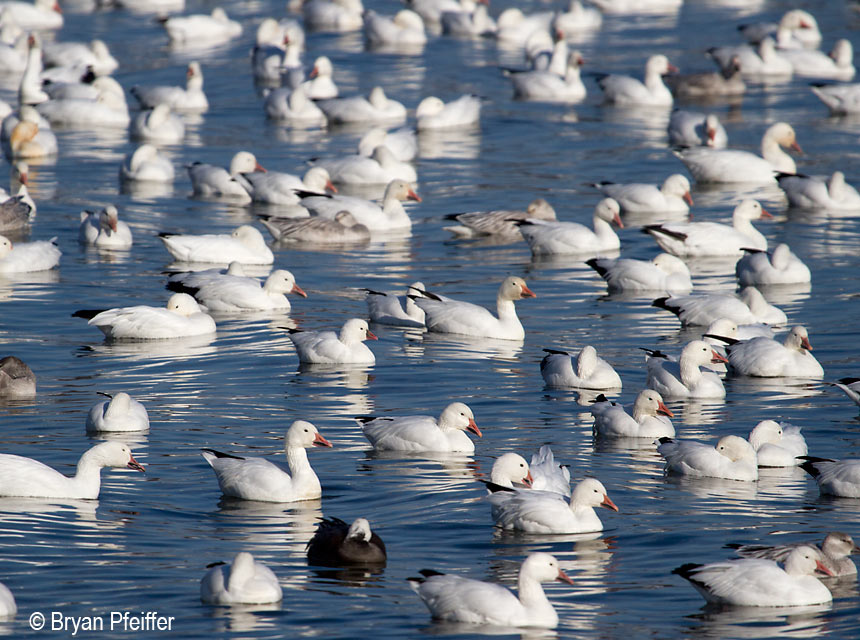
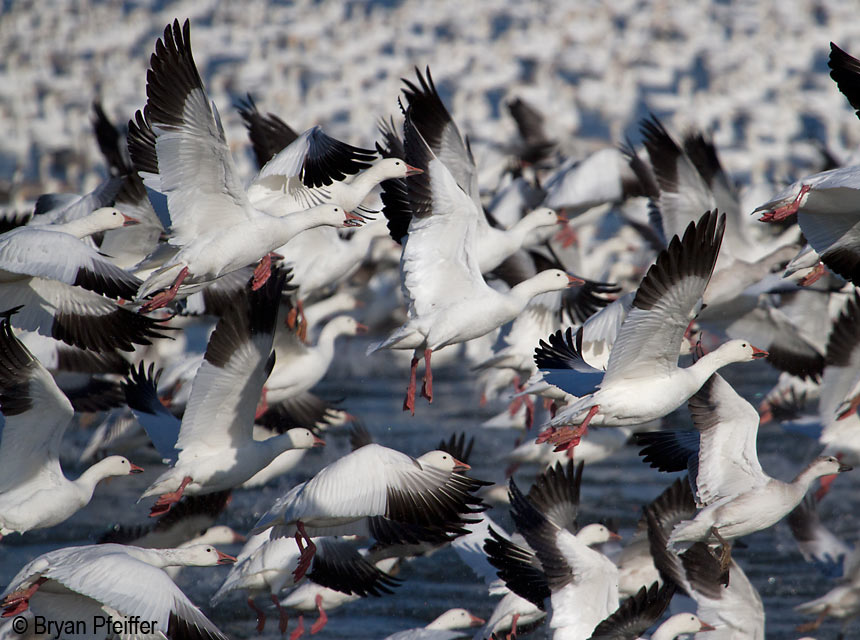
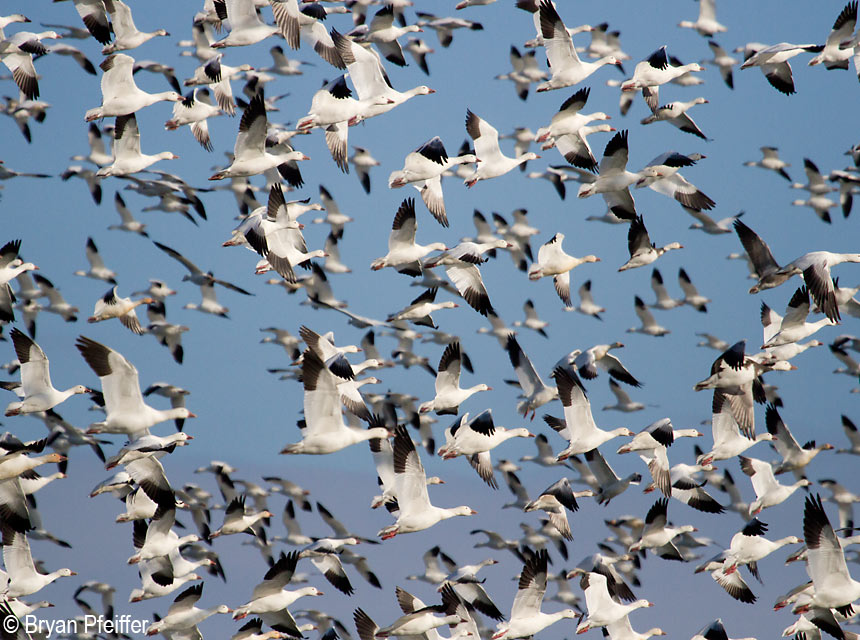
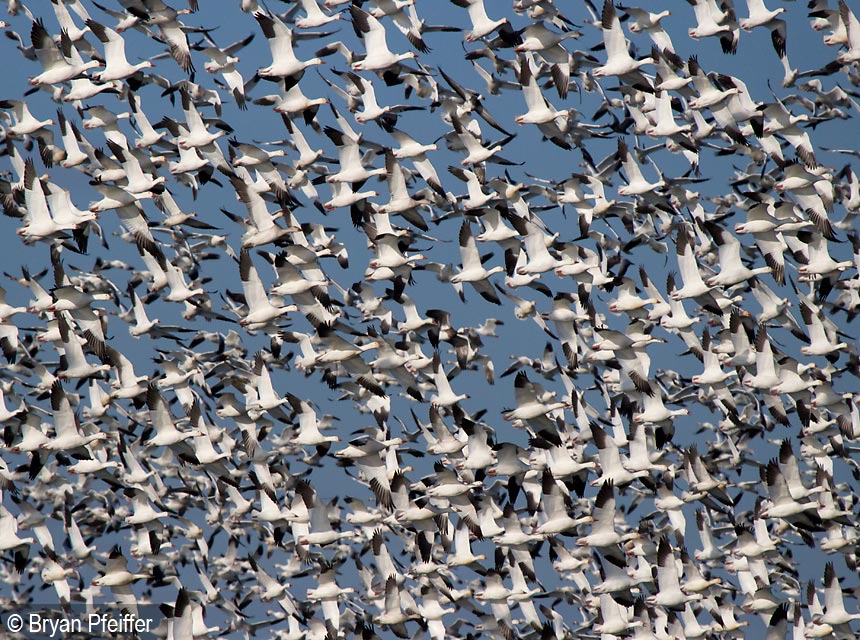

I am a 76 years old lady from Burlington, Vermont and will never see a Ross’s Gull. I did not know they existed. Thank you for the article. It is a very pretty gull. I have seen a Ross’s Goose at Dead Creek; also very nice. Thank you for your updates.
Hope it stays for another trip, Pat!
Hi Jane,
Work the edges of the goose flocks for those Ross’s. They often get pushed out there. And, yes, it does take practice to find them. You gain a search image once you find your first. Good luck!
Talk about a great birding Day!!! I absolutely love the Ross Goose photo—- have yet to see one… I spend a lot of time photographing and observing the Snow Geese at Dead Creek beginning to think it’s quite a feat to spot the Ross Goose.
Those photos make me weep.
Absolutely fantastic!! I couldn’t go with some Mad Birders yesterday, just hoping it stays around for a week. Love the way you write!
Thanks, Dave. And thanks for the editing!
Tres bien! see: http://www.masterimages.org/Birds/Ross's%20Gull/index.html
Great story and a great idea to search out the Ross’s Goose as well. I was lucky enough to see the Ross’s Gull at the water purification works that same Saturday, but at a more respectable 8.30am 😉
One correction to your text: I think you meant to say 5 Ross’s Geese in your second last paragraph.